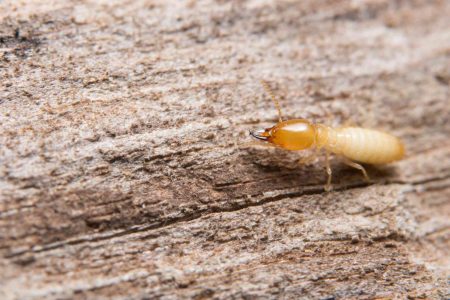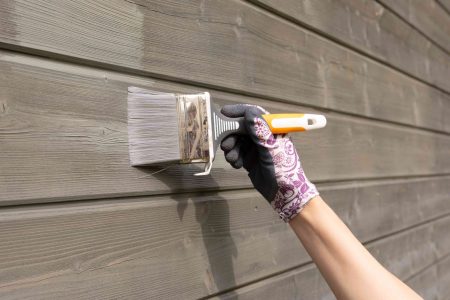In colder climates, winter comes along each year and does its best to destroy our water pipes. The best way to minimize the damage from cold weather on household plumbing is to do a little winterizing pre-season, which essentially means protecting them against any freezing that can expand the water and rupture the pipes. Burst water pipes can cause thousands of dollars of damage when the water soaks walls, ceilings, and floors, so it just makes sense to take preventive measures when and where you can.
A good starting point is to winterize your outdoor faucets (hose spigots). Doing so is relatively easy, thanks to insulated covers you can purchase to fit over the spigots. Installing these covers, along with performing a few simple winterizing procedures, can prevent outdoor faucets from rupturing due to freezing temperatures.
What You’ll Need
Equipment / Tools
- Bucket (for draining excess water)
- Wrench (for any necessary removals or repairs))
Materials
- Insulated outdoor faucet covers (one for each outdoor spigot)
- Faucet repair materials (as needed)
Instructions
Installing outdoor faucet covers should be done in conjunction with some basic winterizing procedures aimed at removing as much water as you can so there is little-to-no trapped water that can freeze inside the spigot.
-
Disconnect Any Hoses
No matter what kind of outdoor spigots you have (freeze-proof or not), it’s important to remove any hoses, splitters, or other fittings screwed onto the spigot before winter sets in. Not removing hoses can trap water and make it much more likely a faucet will freeze.
This is always a difficult step because most people will want to use the outside water until the point when freezing weather begins. However, it’s best to stay ahead of the cold weather by disconnecting hoses early—even one night of freezing weather can cause a break in the pipes.
-
Inspect the Spigots
The next step to winterizing outdoor faucets is leak detection and repair. Check all spigots, yard hydrants, and other fixtures for leaks and drips. If you do find any problems, repair or replace the fixture before the temperature drops to freezing. Dripping water indicates a spigot with a leaky washer or cartridge, which can block up and freeze in the spigot or in the pipe feeding it.
-
Drain the Spigot and Pipes
Getting as much water out of the pipes as possible is the next step. If you have an outdoor faucet that is not freeze-proof, the best way to do this is to shut off that line, if possible, and drain the water from it into a bucket while temperatures are still above freezing.
Do this by shutting off an interior shut-off valve to the water line leading to the spigot. Then open the spigot and leave it open for a few hours until the water inside the pipe drains out. After the water drains out, close the spigot again.
With a frost-free spigot or a yard hydrant, this step isn’t necessary, since the fixture is designed to keep the water away from the end of the spigot. However—just as with regular outdoor spigots—hoses and other attachments should be removed from frost-free spigots and yard hydrants before the winter, or they may not drain properly.
-
Install Outdoor Faucet Covers
The last step to winterizing outdoor faucets is to protect them with insulation. An easy way to do this is to install an outdoor faucet cover on each outdoor fixture, including frost-free spigots.
When covering regular spigots that are not freeze-proof, extra loose insulation can be packed inside the faucet cover to keep it warm and dry throughout the winter. In most situations, however, the faucet cover will provide enough insulation.
Frost-free spigots should still be covered as well—although they are resistant to freezing, they are not completely frost-proof in the coldest weather. There are rubber gaskets and washers inside the frost-free spigots that will benefit from the extra protection from the cold.
How Frost-Proof Wall Hydrants or Hose Bibs Work
Frost-proof wall hydrants or hose bibs are designed to shut off the water inside the foundation wall. This is accomplished because the mechanism is longer than the washer seats at the end of the hydrant or hose bib. They come in different lengths, depending on the width of your foundation wall or point of connection inside. When off, the water drains out.
They do not need additional outside insulation if installed correctly. However, you should always disconnect garden hoses prior to the winter months.
In very harsh environments or during particularly cold winters, if the room where the piping connects inside is not heated, pipes can freeze and burst when they thaw.
How Outdoor Faucet Covers Work
Most faucet covers use one of two styles. Faucet covers are either square or dome-shaped shells made of rigid thermal foam with flexible gaskets that fit right over outdoor faucets, or they are flexible bags made of thick fabric stuffed with insulation. When properly installed so that they seal tightly around the base of the faucet, either style provides good insurance against spigots rupturing due to freezing.
Faucet covers work by trapping heat that naturally radiates through the interior pipes to the outdoor spigot. The insulated cover prevents this radiated heat from escaping and therefore prevents water in the faucet from freezing, expanding, and rupturing the spigot.
Manufacturers may market these faucet covers under several different names, including “garden faucet insulation cover” or “insulated faucet socks.” All of them will do the job, but for the best results, they need to seal tightly so they can provide the most thermal protection.
Read the full article here














